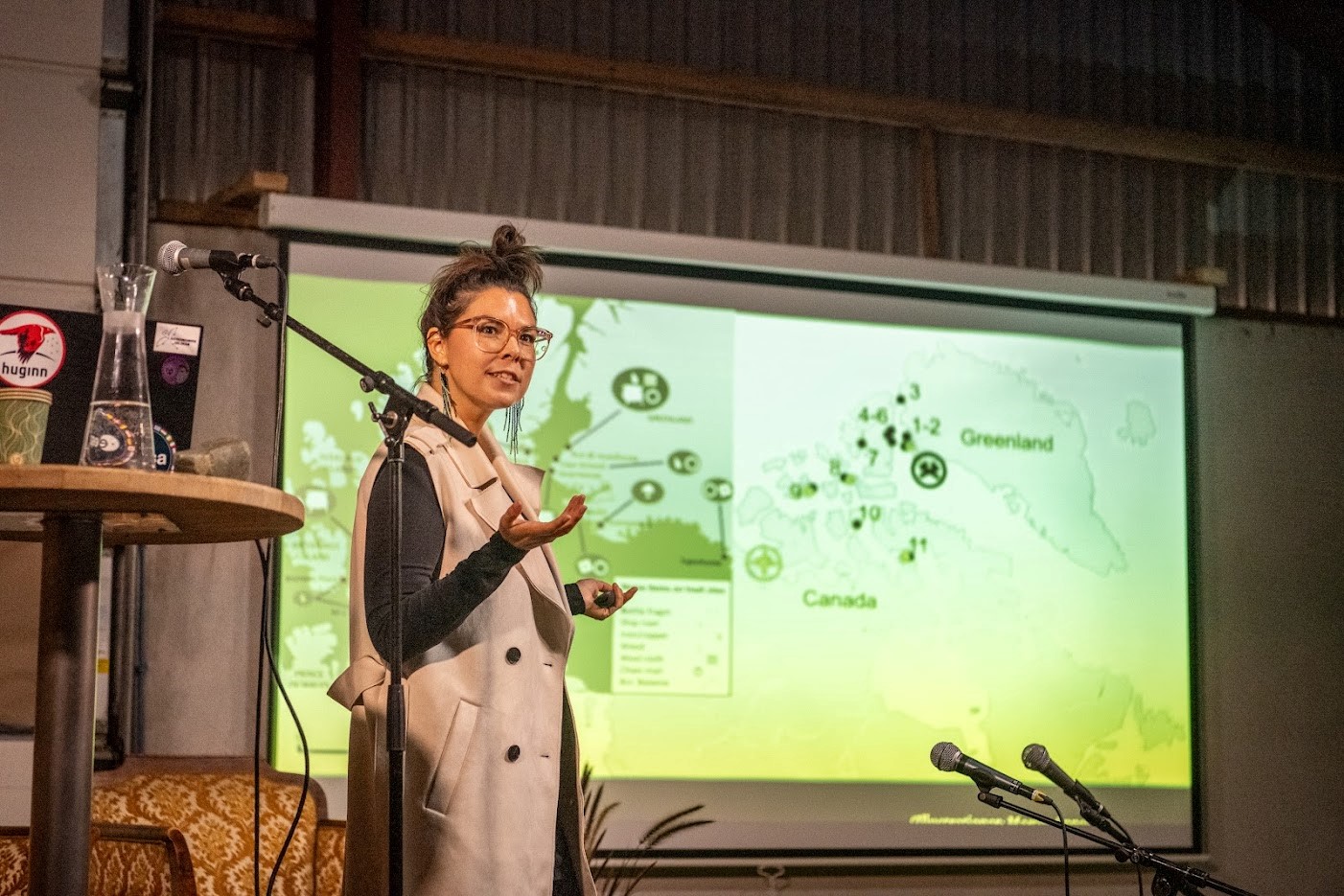Privacy-researcher Asta Mønsted presenting Arctic archaeological perspectives on the starry sky at Dark Sky Festival
Postdoctoral researcher in prehistoric archaeology at Centre for Privacy Studies, Asta Mønsted, presented at a seminar at the Dark Sky Festival in Tårup, Denmark, in the beginning of September 2023. Asta is specialized in Arctic archaeology with a particular interest in intangible cultural heritage, Inuit architecture, and Inuit oral history. In collaboration with Morten F. Mortensen (the National Museum of Denmark), Ivalu Barlach Christensen (Max Planck Institute for Radio Astronomy), and Lars Occhionero (Kroppedal Museum), Asta presented and engaged in dialogue about how people of the Northern hemisphere perceived and made use of the celestial bodies. We have interviewed Asta about the festival, her research in Arctic Archaeology, and her research aims at Centre for Privacy Studies.

Asta Mønsted presenting at Dark Sky Festival hosted by Kunstrum Fyn. Photo by Jørn Albertus. Used with permission.
What was your contribution to the festival about?
I presented, to the engaging audience, the excavation we conducted with the National Museum of Denmark in 2015, which turned up some meteoric iron that the Greenlandic Inuit had cold hammered in the very Northern part of Greenland. I brought a hammer stone of basalt for the audience to see and feel for themselves what I was talking about. In my experience, bringing material and facilitating sensory experiences is such an excellent way to engage your audience.
What role have darkness and the starry sky played in your research in Arctic archaeology and Inuit oral history?
I have seen in my research that the celestial bodies of the sky indicated for the Inuit when it was time for upcoming tasks of the annual round. For example, when Venus (Naalassartoq) is present it is time for salmon fishing or berry picking. Many Inuit groups of the Arctic have different stories connected to specific star constellations and the starry sky has been a way of navigating within the landscape.
What was the most interesting part about attending the Dark Sky Festival?
I would like to emphasize how this festival wonderfully combined science and art; two subjects we often think differ significantly from each other. There were exhibitions with video, paintings, music, sound novels, and light installations all created by contemporary artists based on the ideas, feelings, and knowledge of the universe. All of this was brought together with research and it created a space where one could allow oneself to reflect on what we know and do not know as humans. It was beautiful.
Looking back at your previous research on Inuit architecture and Inuit oral history, do you see any aspects of privacy and the private in your material? And what aspects do you aim to look further into in your research at Centre for Privacy Studies?
Looking back, I see small glimpses of what might be understood as privacy, but it will be very interesting for me to discuss this further with colleagues here at the centre.
I aim to delve further into the notion of privacy in an early colonial Greenlandic context to see if, and if so, what kind of privacy is indicated through the sources we study. I will especially be very keen to see how the notion of privacy materializes into Inuit architecture and how it is negotiated over time.
